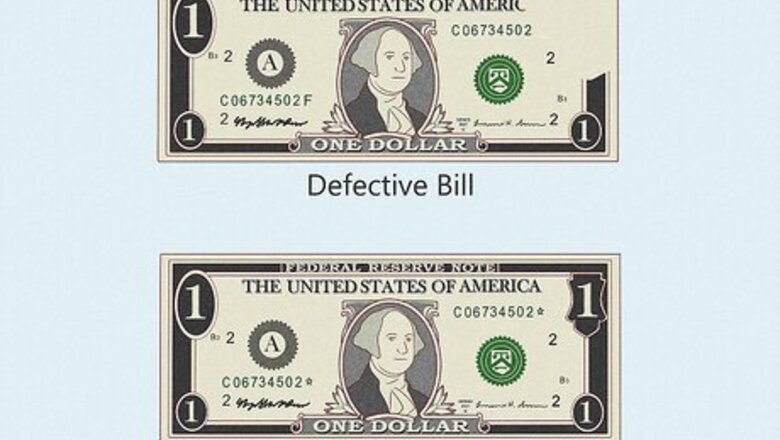
views
What are star notes?
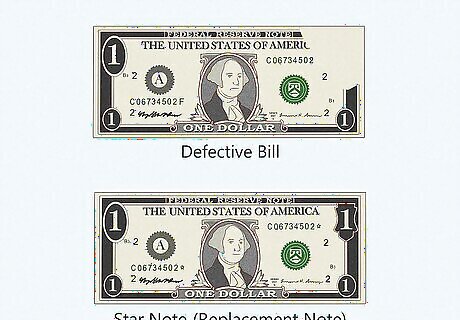
A star note is currency that was minted to replace a defective bill. That’s why they’re more officially referred to as “Replacement Notes.” These are made by the Bureau of Engraving and Printing (BEP) to replace notes that were damaged during production, and have a star symbol at the end of their serial number to signify this. Star notes have their own unique serial numbers followed by the star—not duplicate serial numbers of the bills they replace. Older forms of currency, like gold and silver certificates, often feature the star before the serial number.
Rarity of Star Notes
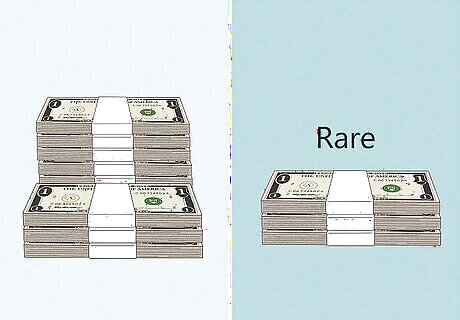
Star note rarity depends on the batch size. Billions of notes are printed each year, but most years, less than 1 million of those are star notes. Money is printed in “runs,” or batches, of varying sizes. The BEP commonly prints batches of 360,000 star notes at a time, but this number can increase if the BEP is also printing a higher amount of regular notes. Star notes printed in batches of 640,000 or fewer are often considered valuable enough to collect. Also, star notes produced in special or older print runs are often more desirable. Star notes are, of course, less common than regular notes, but not every star note is considered particularly rare or valuable.
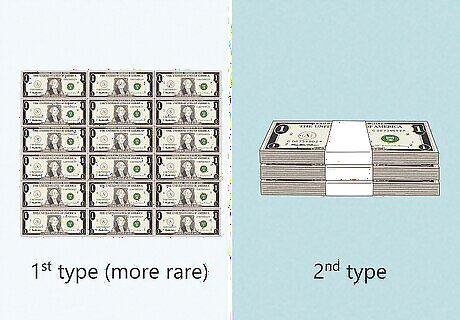
There are two types of star note, and one is rarer. Star notes are issued in 1 of 2 circumstances. In the first, the printing error is caught before the notes are cut to size. In this case, an entire sheet of uncut notes is replaced by a sheet of star notes, which are then cut instead. This type is much more rare than the second type, since sheets often only consist of 18 uncut notes. The second type happens when the error is caught after cutting, when bills are sorted into packs of 100, in which case the entire pack is replaced by star notes. It’s often impossible to tell which is which at a glance, but dedicated enthusiasts have built online databases that identify which type many star notes belong to.
Star Note Values
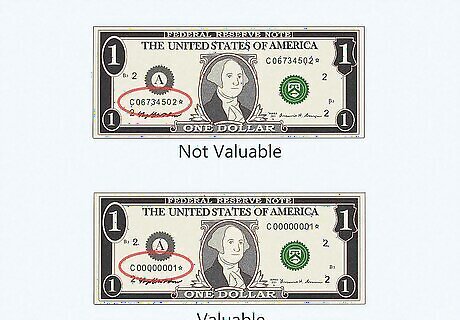
Most star notes aren’t particularly valuable. For the most part, star notes are only worth their face value—a $1 star note is usually only worth $1. What makes some star notes valuable are traits that also make them especially rare, like unusual serial numbers, such as 00000001 or 99999999, or significant print series, like those printed during major historical events or in extremely limited runs. Depending on a star note’s rarity, it might sell for anywhere from a few dollars to thousands of dollars. Often, the physical condition of the star note will also affect how valuable it is. Notes in better condition tend to sell for much more.
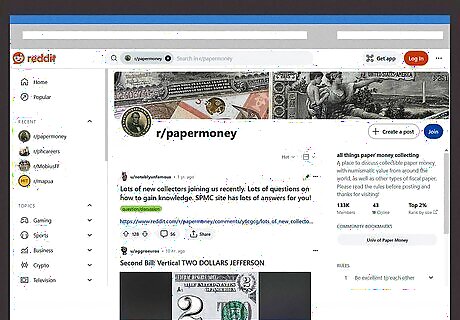
Ask a local currency expert about your specific star notes. There are a huge number of currency experts, evaluators, and enthusiasts all across the country. Finding a local expert or appraiser is perhaps the most trustworthy and accurate way to get your star note valued. Or, you might post photos of it to an online forum like r/Papermoney on Reddit and ask the users there to give their opinions. Or, use this online Star Note lookup tool to see your note’s production numbers. Other popular forums include CoinTalk and CoinWorld.
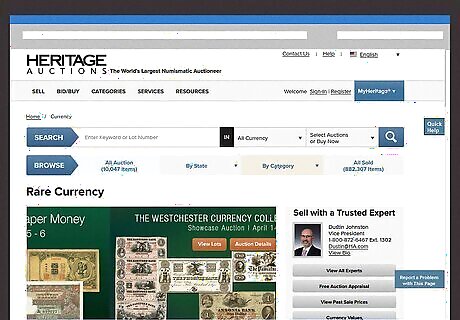
Sell the note on eBay or other sites to find its value. Star notes never have a set value—they’re only as valuable as other people say they are. That’s why the best way to find out the value of yours is to sell the currency on a site like eBay and let other people decide for you in an open auction. Currency collection is a bustling and popular hobby, and many enthusiasts frequent sites like eBay or Heritage Auctions to bid on notes put up for sale.
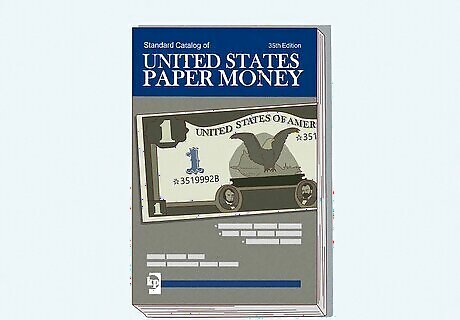
Look up the note’s year and series in an informational book. Books like the Standard Catalog of United States Paper Money offer many details about the production and history of star notes. Some even catalog the batches and offer details on when and how many notes were produced, and why. Looking up your note’s serial number in one of these can offer clues to your note’s value. It’s hard, if not impossible, to know the precise value of a note until it’s actually sold, but resources like these can clue you into rarity. Other resources include A Guide Book of United States Paper Money and the Standard Guide to Small-Size U.S. Paper Money: 1928 to Date.
Finding & Selling Star Notes
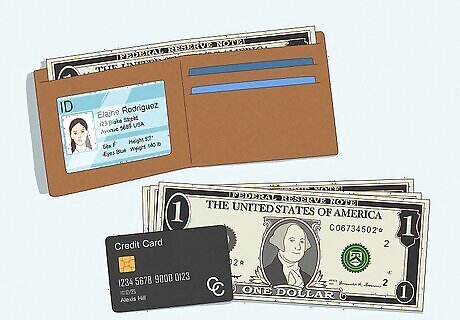
Keep an eye out in your everyday life. If you’re interested in collecting star notes, the easiest way is just to examine any bills that cross your path. When you’re given change at the store, or when you’re withdrawing money from the bank, check each note for that telltale star that signals you’ve got a replacement note.
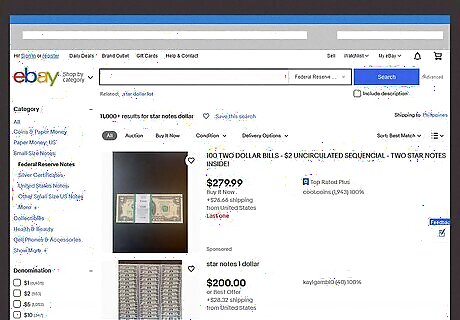
Buy or trade star notes online. Rare banknotes are easy to find on marketplaces like eBay and CoinWorld. Here, collectors and enthusiasts buy and trade rare notes for profit, and while some notes may go for quite a high price, you’ll also be able to find plenty of cheaper or less-valued notes. Some of the rarer notes can sell for thousands of dollars online.

Attend a coin convention or collector’s show. If you live in a major city, there are probably conventions, fairs, and other gatherings for local and national collectors every so often. At these, you’ll find scores of enthusiasts who’ve brought their own star notes in hopes of a sale or trade. Search the internet, or your city’s events calendar, to see if a convention is happening soon near you.
Banknote Identifiers
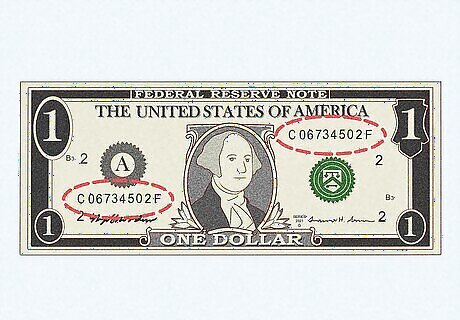
Serial number Up until 1995, all paper notes had a serial number that consisted of a letter A-L, which indicates which bank issued it, 8 identifying digits, and a final letter that cycles as every possible serial number is taken. After 1995, serial numbers begin with 2 letters, with the first denoting the note’s print series, and the second denoting the bank that issued it. Of course, stars at the end of, or replacing the final letter in, a serial number, are star notes.
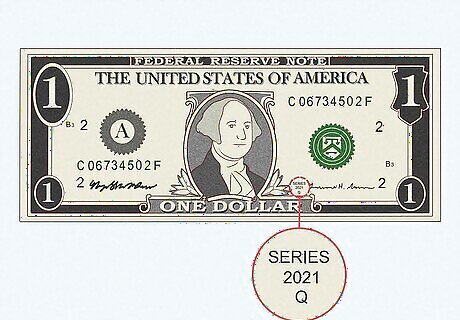
Series year Most notes feature the word “Series” with a year and letter beneath it, which indicates which series the note belongs to—when it was printed, and the design used to print it. This is handy for tracking down your star note’s possible rarity, like if you’re looking up the total number of notes printed in that series. The letter under the year indicates a significant change to the note’s previous design.
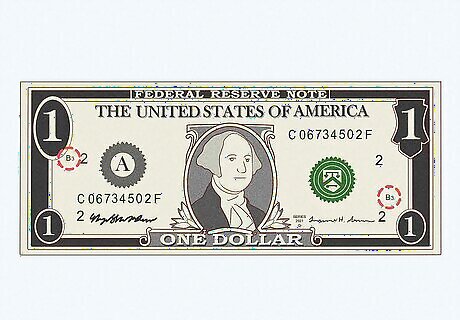
Sheet position letter and number Many notes feature a small letter and number combination in multiple corners on the front that indicates the note’s position in the sheet before the sheet was cut. This system varies by year and note type.
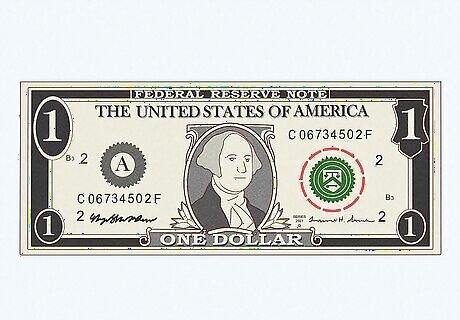
Treasury seal Every note carries a green stamp that indicates it’s officially recognized as legal tender by the U.S. Department of the Treasury. The design was changed in 1969 to replace the latin transcription with English.
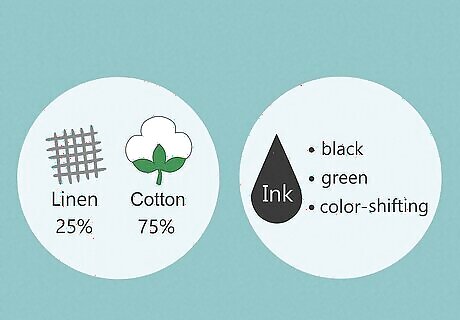
Paper & ink Every U.S. note is printed on paper made of 25% linen and 75% cotton, which makes the paper unique and durable. The paper also features tiny red and blue fibers all throughout that makes it much more difficult to counterfeit. Notes also use a variety of inks, including black, green, and color-shifting inks, all of which are formulated by the BEP. Color-shifting inks are also harder to counterfeit.




















Comments
0 comment